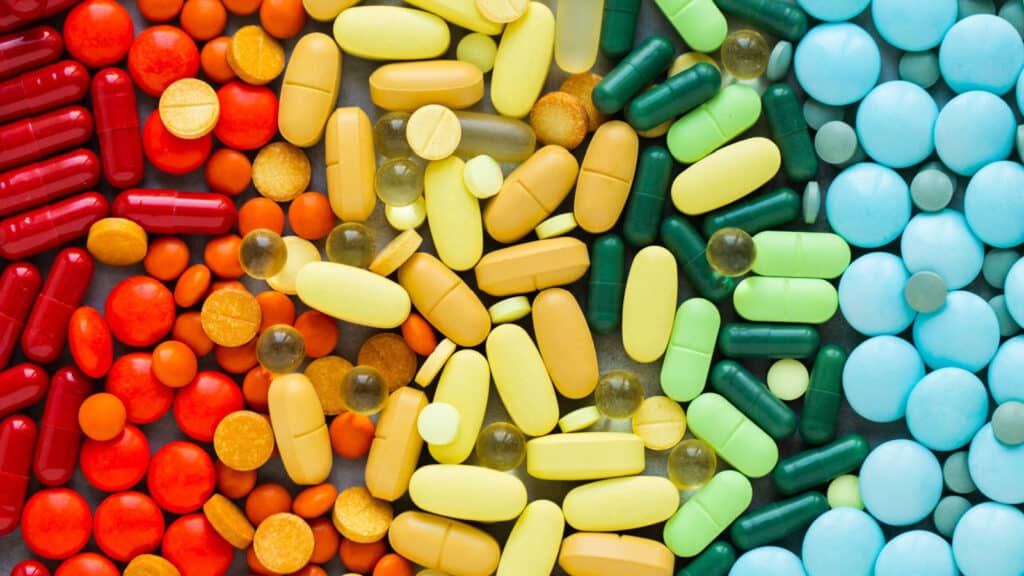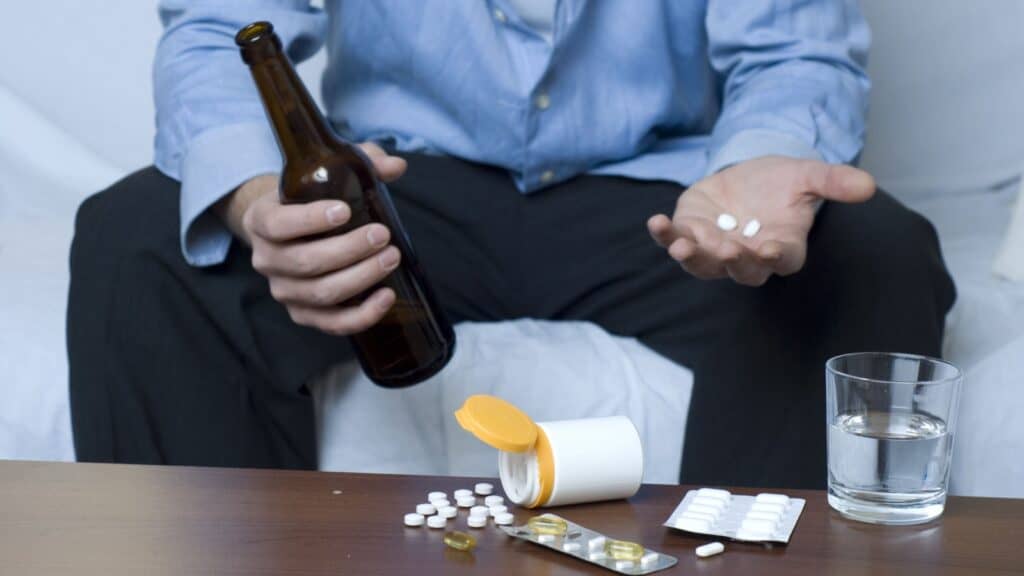Top 10 Substances Fueling Teen Drug Use in America Today
Here are the top 10 substances most commonly abused by American youth, drawing from the latest data and research. While some traditional drugs maintain their grip on teen populations, emerging substances and novel methods of consumption have entered the scene, reshaping our understanding of youth drug culture.
What The Data Tells Us

The Monitoring the Future (MTF) survey, a long-standing barometer of teen substance use, reveals that in 2023, 10.9% of eighth-graders, 19.8% of 10th-graders, and 31.2% of 12th-graders reported using illicit drugs in the past year. These figures, while concerning, actually represent a continuation of the trend where drug use has remained below pre-pandemic levels. However, this seemingly positive news is overshadowed by a disturbing rise in overdose deaths among teens, largely attributed to the presence of illicit fentanyl in counterfeit pills.
As we explore each substance, we’ll uncover not just usage statistics, but also the underlying factors driving teen drug use. Recent studies have highlighted the complex relationship between socioeconomic status and substance abuse, challenging long-held assumptions about which teens are most at risk. Additionally, we’ll examine how the COVID-19 pandemic has reshaped teen drug use patterns and the growing concern over teens using substances to self-medicate for anxiety and depression.
This list aims to provide a nuanced understanding of the current state of teen drug use in America. By shedding light on these trends, we hope to equip parents, educators, and community leaders with the knowledge needed to address this critical issue and support the health and well-being of our nation’s youth.
1. Alcohol

Alcohol continues to be the most widely abused substance among teenagers. According to the 2023 Monitoring the Future (MTF) survey, approximately 29% of 12th-graders reported using alcohol in the past year. Despite this high percentage, it’s worth noting that 69% of females and 63% of males aged 14-17 are choosing not to drink alcohol, according to the National Drug Strategy Household Survey 2019.
2. Marijuana

Cannabis remains the second most popular substance among high school students. The MTF survey reports that about 29% of 12th-graders, 18% of 10th-graders, and 8% of 8th-graders used marijuana in the past year. These rates have remained relatively stable since 2021, marking the first substantial change in prevalence in over a decade.
3. Nicotine (Vaping)

Nicotine consumption through vaping has become increasingly popular among teens. While specific percentages for 2024 are not provided, the MTF survey indicates that vaping nicotine remains one of the most commonly used substances among teenagers.
4. Prescription Stimulants

Misuse of prescription stimulants, such as Adderall and Ritalin, is a growing concern. In the past year, 4.4% of 12th-graders reported using Adderall, while 1.7% used Ritalin. These rates are higher than those for illicit stimulants like cocaine or methamphetamine.
5. Prescription Opioids

The abuse of prescription opioids, including OxyContin and Vicodin, continues to be a problem among teens. According to the MTF survey, 3.7% of 12th-graders reported using OxyContin in the past year, while 1.7% used Vicodin.
6. Delta-8 THC

A new addition to the MTF survey in 2023 was delta-8 THC, often referred to as “diet weed.” More than 11% of 12th-grade students reported using delta-8 over the past 12 months. This substance is legal at the federal level due to a legislative loophole but not in all states.
7. Inhalants

Inhalant use remains a concern, particularly among younger teens. The Australian Secondary Students’ Alcohol and Drug (ASSAD) survey reported that 18% of teenagers aged 12-17 had tried inhalants. While this data is not specific to the U.S., it highlights the prevalence of inhalant abuse among youth.
8. Hallucinogens

The use of hallucinogenic drugs, such as LSD and psilocybin mushrooms, is less common but still present among teens. Specific percentages for 2024 are not provided, but these substances are included in the list of commonly abused drugs by teenagers.
9. Over-the-Counter Medications

Abuse of over-the-counter medications, particularly cough syrup containing dextromethorphan (DXM), is a persistent issue. The MTF survey reports an annual use prevalence of 3.2% for 8th, 10th, and 12th graders combined.
10. MDMA (Ecstasy/Molly)

While less common than other substances, MDMA use is still present among teens. According to the MTF survey, 2.2% of 12th graders reported using MDMA in the past year.
The Main Ways Teens Get Access To Drugs

Based on the search results, here are some of the main ways teens typically access drugs:
From their own home or family members

– Many teens obtain prescription drugs from their family’s medicine cabinet or from relatives.
– The majority of adolescents who misuse prescription drugs get them from their own home or from friends and family members.
From friends at school

– About 1 in 5 high school students say they have been offered, sold, or given drugs on school property.
– Teens often sell or share their own prescription medications with peers at school.
Online

– Teens can access drugs through illegal websites that don’t require prescriptions.
– Some teens order prescription drugs online and have them shipped to their homes.
From dealers/strangers

– Some teens report getting drugs from “anyone who has drugs”.
Through social networks and online forums

– Social media and online groups expose teens to drug culture and can facilitate access.
By faking symptoms to get prescriptions

– Some teens fake symptoms to get prescriptions from doctors.
By stealing

– Teens may steal prescription drugs from family members or others.
At parties or social gatherings

– Many teens report using substances with friends in social settings.
The ease of access, especially to prescription drugs in the home and from peers, seems to be a major factor enabling teen drug use. Parental awareness and securing medications at home are important prevention steps.
How Does Socioeconomic Status Influence Drug Use?

Socioeconomic status (SES) has a complex and sometimes counterintuitive influence on teen drug use. Research indicates that both high and low SES can be associated with increased substance use, but the types of drugs and patterns of use tend to differ:
Higher SES Teens

Teens from higher socioeconomic backgrounds are more likely to use:
Alcohol: Higher family income and parental education are associated with increased rates of binge drinking in adolescence and early adulthood. Wealthier teens may have more disposable income to purchase alcohol and access to social settings where drinking is common.
Marijuana: Studies have found that higher household income and parental education correlate with higher rates of marijuana use among teens and young adults.
Cocaine: Some research indicates cocaine use is more prevalent among adolescents and young adults from higher SES backgrounds.
Prescription Stimulants: Misuse of prescription stimulants like Adderall and Ritalin appears to be more common among affluent teens, possibly related to academic pressures.
Lower SES Teens

Teens from lower socioeconomic backgrounds are more likely to use:
Cigarettes/Tobacco: Lower parental education and income are consistently associated with higher rates of cigarette smoking among adolescents.
Inhalants: Some studies suggest inhalant use may be more prevalent among lower SES youth.
Methamphetamine: While not conclusive, some research indicates methamphetamine use may be more common in lower SES communities.
Factors Influencing SES-Related Drug Use Patterns

Several factors may contribute to these SES-related differences in drug use:
1. Disposable Income: Wealthier teens may have more money to spend on substances.
2. Peer Influence: In affluent communities, substance use may be seen as more socially acceptable or even tied to popularity.
3. Academic Pressure: High-achieving teens from affluent backgrounds may use substances to cope with stress.
4. Parental Supervision: Affluent working parents may provide less supervision, enabling substance use.
5. Environmental Factors: Lower SES neighborhoods may have higher drug availability.
6. Coping Mechanisms: Teens from different SES backgrounds may turn to different substances as coping strategies.
It’s important to note that these trends are generalizations, and individual experiences may vary. Substance use occurs across all socioeconomic levels, and no group is immune to the risks of drug abuse. Prevention and intervention efforts should be tailored to address the specific risk factors and substance use patterns in different socioeconomic contexts.
The Impact Of The Pandemic On Drug Use In Teens

The COVID-19 pandemic has had a significant and somewhat unexpected impact on teen drug use trends in the United States. Here are the key points based on the latest research:
Overall Decline in Substance Use

The Monitoring the Future (MTF) survey, a key barometer of teen substance use, found that reported drug use among teenagers decreased dramatically between 2020 and 2021, coinciding with the onset of the pandemic. This trend has largely continued into 2023:
– In 2023, 10.9% of 8th graders, 19.8% of 10th graders, and 31.2% of 12th graders reported any illicit drug use in the past year.
– These percentages remain below pre-pandemic levels reported in 2020.
Persistence of Lower Use Levels

Contrary to expectations that substance use might rebound as schools reopened and social distancing measures relaxed, the lowered levels of drug use have persisted:
– Most reported substance use among adolescents held steady at the lowered levels established in 2021 and 2022.
– This trend continued into 2023, suggesting a potentially lasting impact of the pandemic on teen drug use patterns.
Specific Substance Trends

The survey found that teens most commonly reported use of alcohol, nicotine vaping, and cannabis in the past year. However, levels generally declined or held steady compared to 2022:
– Use of narcotics other than heroin (including Vicodin, OxyContin, Percocet, etc.) decreased among 12th graders, with only 1% reporting use within the past year.
– Abstinence from marijuana, alcohol, and nicotine increased for 12th graders, with 62.6% reporting no use of these substances in the past month.
Paradoxical Rise in Overdose Deaths

Despite the overall decline in reported drug use, there has been a concerning increase in drug overdose deaths among adolescents:
– Drug overdose deaths among teens more than doubled since the onset of the pandemic.
– This increase is largely attributed to the presence of illicit fentanyl in counterfeit pills made to resemble prescription medications.
Long-Term Implications

Researchers suggest that the pandemic-induced delay in drug use during adolescence could have positive long-term effects:
– Richard Miech, team lead of the MTF study, notes that “a one-year delay in drug use during adolescence can lower future trajectories of drug use for years to come.”
In conclusion, while the COVID-19 pandemic has led to an overall decrease in reported teen drug use, it has also coincided with a rise in overdose deaths, highlighting the increased dangers of drug use in the current environment. These trends underscore the importance of continued monitoring and targeted interventions to address the evolving landscape of teen substance use.
Key takeaways:

1. Traditional substances like alcohol and marijuana remain prevalent, but vaping has emerged as a significant concern.
2. Socioeconomic status influences drug use patterns, with different substances favored across the economic spectrum.
3. The pandemic has unexpectedly led to decreased overall drug use among teens, potentially offering long-term benefits.
4. Despite lower usage rates, the risk of overdose has increased dramatically due to the presence of fentanyl in the drug supply.
5. Access to drugs often begins at home or through peer networks, highlighting the importance of parental awareness and secure storage of medications.
Moving Forward

As we move forward, it’s crucial for parents, educators, healthcare providers, and policymakers to remain vigilant and adaptive in their approach to prevention and intervention. This includes:
– Addressing the root causes of drug use, such as mental health issues and social pressures
– Enhancing education about the dangers of counterfeit pills and fentanyl
– Implementing evidence-based prevention programs in schools and communities
– Improving access to mental health resources and substance abuse treatment for teens
By staying informed about current trends and working collaboratively, we can better protect our youth from the dangers of substance abuse and support their healthy development into adulthood. The fight against teen drug use requires ongoing effort, adaptability, and a commitment to understanding and addressing the ever-changing nature of this critical issue.
Where To Get Information And Help

Here are 5 resources for parents concerned about their kids’ drug use:
- Talking to Your Child About Drugs – This resource from KidsHealth provides guidance on how to discuss drugs with children of different age groups.
- Substance Use Prevention Resources for Parents – The Pennsylvania Department of Drug and Alcohol Programs offers various resources and tips for parents to prevent substance use in their children.
- Parents & Educators Resources – The National Institute on Drug Abuse (NIDA) provides science-based information and educational materials for parents and educators.
- Substance Use Resource Center – The American Academy of Child and Adolescent Psychiatry offers a comprehensive resource center with information on prevention, treatment, and support for families dealing with substance use issues.
- SAMHSA’s Treatment Locator – This tool from the Substance Abuse and Mental Health Services Administration helps parents find treatment facilities for their children if needed.







